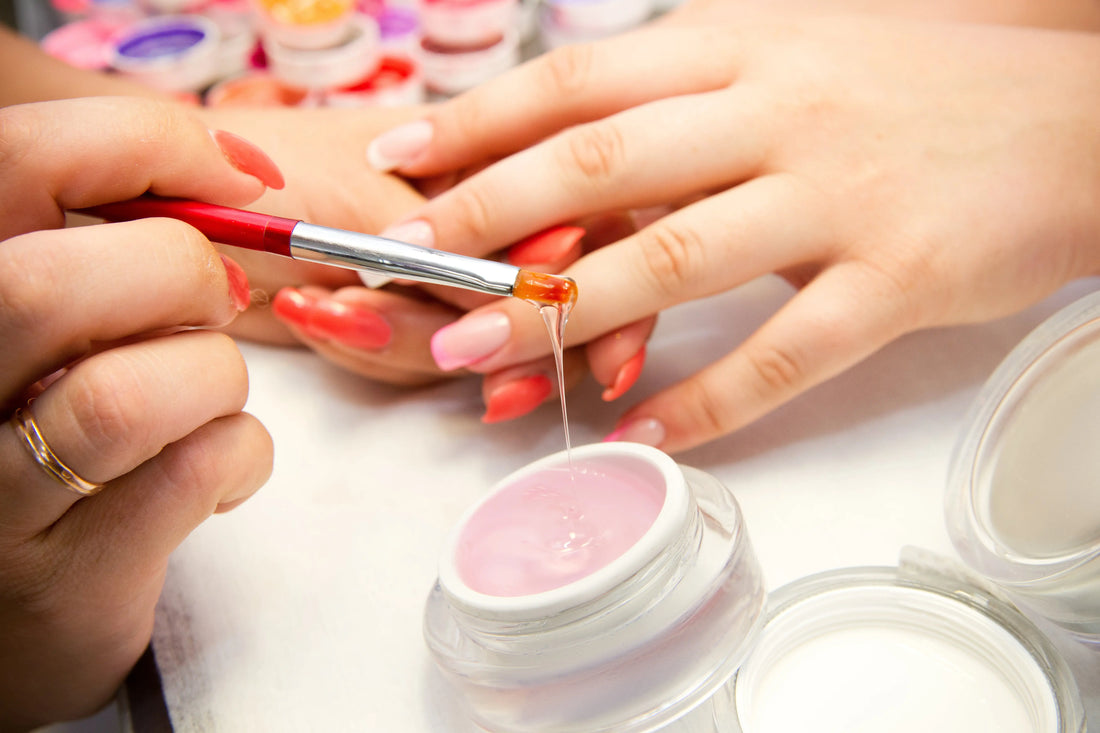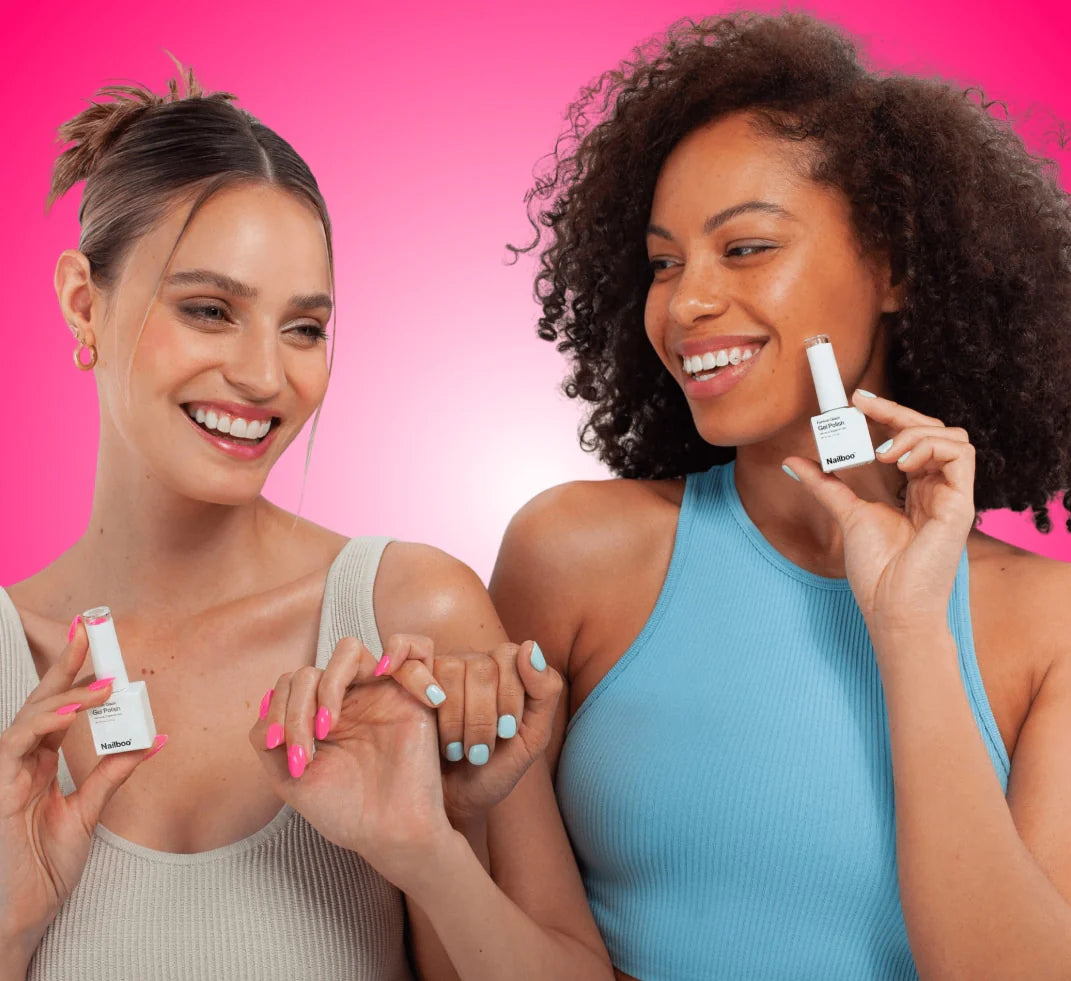There are many benefits to gel nails over other options, like increased durability, longevity, and even protection for your nail underneath. But it’s also important to keep your nail safe and cared for while having gel nails applied and during the removal process. Taking proper care of your gel manicure is essential for keeping the rest of your nails healthy and strong, and will prevent complications down the line.
Nailboo is here to help. We believe in innovative and exciting new options that bring salon-quality manicures right to your home, which is why we carry easy-to-use dip polish kits. It’s also why we’re sharing information and care tips for every type of polish and manicure. Check out this guide to safe gel nail removal without acetone to get the nail care you deserve.
Benefits of Removing Gel Nails Without Acetone
Acetone is a very effective tool when it comes to removing your gel nails without damaging the natural nail below, and you might be wondering if it’s worth it to switch to another removal process. Here are just a few of the benefits of removing your gel nails without the use of acetone.
You Can Do It in a Pinch
While many professionals recommend the use of acetone for safe and proper nail removal, you may not always have acetone on hand. If you find yourself in a bind when it comes to removing your nails, whether because one is starting to peel or because you need to perform an at-home manicure for an upcoming event, you have options. It’s a good idea to know how to remove your gel nails without acetone in the event of an emergency.
Acetone Can Dehydrate the Nails
Acetone is very effective at removing gels and other types of nails, but that’s because it’s a strong chemical agent. To that effect, acetone can dry out the nails and cause them to become brittle and even weak over time.
If your nails are already thin, you want to make sure that you’re taking care when using acetone or even to avoid it completely. It’s also a good idea to leave time between manicures to give your nails a chance to heal and grow strong.
Acetone Can Irritate the Skin
Not only can acetone cause weakening of the nails, but it can also have an effect on the cuticle and nailbed, which can be especially frustrating if you have sensitive skin.
It can dry out the skin, even if your skin is otherwise healthy, and leave it feeling cracked or raw. Avoiding acetone is best if your skin is easily irritated, but you always want to be sure to moisturize and lotion the skin around the nails if you do have to use it.
How To Remove Gel Nails Without Acetone
Acetone is still a very common tool for removing gel nails, but don’t worry. You have other options when it comes to taking off your nail polish without the use of acetone. Here’s what you’ll want to have on hand and the steps you’ll want to take.
You Need a Few Tools
There are a few essential tools you want to have on hand when it comes to removing your gel nails, including the following:
Remover: You have a few replacement options to use instead of acetone. Hand sanitizers, hydrogen peroxide, and cuticle oil are some of the most popular and effective methods. You can also try a kitchen oil like olive oil. If you have nothing else on hand, warm, soapy water or vinegar can be used to remove gel nails.
Cotton Swabs: Whether you’re using acetone or a replacement, you’ll want to have cotton swabs on hand. In order to achieve the full effectiveness of the removal process, it’s best to soak the cotton ball or swabs in the remover and apply them to the surface of the nail, so the remover has a chance to take effect. You might also consider using removal clips.
Cuticle Pusher: A cuticle pusher is an essential tool for carefully removing the gel nail from the surface of your natural nail. It’s important to make sure your cuticle pusher is sanitary before use.
Nail File: You’ll use a nail file to smooth and care for your nails once the gels have been removed, so it’s a good idea to have one for the end of the removal process.
Cuticle Oil and Hand Cream: Removing your gel nails can be abrasive on the nails and the skin surrounding the nails, even if you use acetone. That’s why you always want to have cuticle oil and hand cream when removing gel nails. The cuticle oil will help to rehydrate the nail after removing the cover from the gel, and the hand lotion is great for supporting skin health after exposure to drying agents.
Steps To Take
The steps you take to remove your gel nails will vary depending on the remover agent you use, but there are a few things that remain consistent, including some of the following:
Step One: Soak your cotton swabs and apply them. Whatever your remover might be, soak your cotton balls and apply them to the surface of the nail. It’s best to wait about 10 minutes to allow the remover to take full effect.
If you are using a hot water solution, make sure the water is very hot and soapy. Rather than soaking the cotton balls in the water, simply place your fingernails into the water solution for a short period of time until the nails begin to loosen.
Step Two: It’s best to take your time when removing the nails and don’t be afraid to apply more solution as necessary. Slowly and gently use your cuticle pusher to push the gel nail off the surface of the natural nail. Make sure the entire nail is removed as carefully as possible, to avoid pulling off the surface of the nail or causing damage to the surface of the nail. Use the cuticle pusher to remove the nails completely.
Step Three: Use your nail file to buff out any of the remaining gel on the surface of the nail. Be gentle, as you don’t want to remove any of the organic nail, and file carefully to take off stubborn or stuck gel solution.
Step Four: Apply your cuticle oil and hand lotion. Most solutions that can be used to remove nail polish can be drying and abrasive. Natural and low-impact solutions are available, but the process can be traumatic to the nail even with care. That’s why it’s so important to have cuticle oil on hand for protecting the surface of the nail and hand lotion for softening and caring for the skin around the nails. Cuticle oil and hand lotion are essential tools for any manicure kit.
Step Five: Allow your nails time to heal. Gel nails have many benefits. Like other adhesive or synthetic nails, they can last a long time and protect your nail from damage. But they can also put a strain on the nail over time, as can the removal of gel nails. It’s always a good idea to allow your nails a few days to heal and strengthen after removing your gel nails before applying the next set.
Acetone-Free Removal Is Possible
Here at Nailboo, we’re dedicated to providing you with the tools and resources you need to care for your nails and keep them growing strong. We believe that dip polish manicures are a safe and effective way to get high-quality manicures right from the comfort of home, but we also want to provide information on your options and manicure choices, so you can pick the best one to fit your lifestyle and style needs.
If you love gels and you’re looking to remove your gel nails at home, you have options. While acetone is traditionally used, you can substitute other remover products, like hand sanitizer and cuticle oil, and with care and persistence, you can safely take the gel nail off the surface of the natural nail. Don’t forget to keep your hand lotion close by.
And if you want to try out a long-lasting and low-impact dip polish manicure, Nailboo has you covered. Explore our growing collection of nail dip kits and check out our library of guides and tutorials to get started with ease. Don’t forget to share your new favorite looks!
Sources:
Everything You Need to Know Before Getting a Gel Manicure | Seventeen Magazine
12 Best Cuticle Oils to Heal Dry Skin and Hangnails, According to Nail Experts | Good Housekeeping

